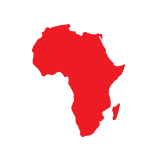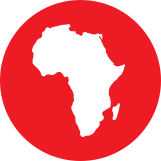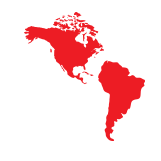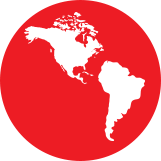On the morning of the final day of the fourth meeting of the Transitional Committee (TC) to design the Loss & Damage Fund (LDF), incoming COP28 President Sultan Ahmed Al-Jaber said in a video address to the committee: “We have no choice but to deliver. This is what the world expects from us today. And that is that mandate that has been given to this very important Transitional Committee for Loss & Damage.”
Some 16 long hours later, a visibly weary and frustrated Richard Sherman, the developing country co-chair of the TC, sat before the plenary and stated plainly, “We have failed.”
The collapse of last week’s TC meeting in Aswan, Egypt (TC4) was indeed a dramatic failure – the committee was mandated with delivering a framework for the new L&D Fund, the creation of which was the crowning achievement of COP27, to COP28. Going into its fourth and final meeting, the TC co-chairs had identified 13 key areas of divergence that needed to be resolved before a final text could be agreed. By the end of the meeting, precisely zero of those divergences had been fully resolved.
However, enough progress was made, and the political pressure on the committee to deliver was sufficiently strong, that members agreed to an emergency fifth meeting – a last-ditch effort to salvage the TC process and deliver on its mandate. That fifth meeting (TC5) will take place in Abu Dhabi on November 3-4. The committee now has two days to resolve its differences and come up with concrete, agreed recommendations to forward to COP28, which itself begins very soon on November 30.
What happened at TC4?
But the differences are still very large; developed and developing countries have very different ideas of what the LDF should look like. From our perspective, the Fund must be able to respond to climate impacts at scale, by delivering debt-free funding directly to any developing country that needs it, with proper frameworks to ensure human rights, gender responsiveness, and inclusive decision-making are all incorporated into funded activities. The LDF should be primarily resourced by the historically developed countries such as the U.S., Europe, Canada, Australia, and Japan, while being able to accept voluntary contributions from other countries as well as “innovative sources” like future taxes on the fossil fuel industry.
Developed countries, however, are negotiating with the goal of having a fund that is more limited in scope, more heavily controlled by contributors, and unlinked to any principles of equity that would require rich countries to pay into the fund. Each of their most contentious positions can be linked to these ultimate objectives:
- They are pushing for the LDF to be housed under the World Bank, which is controlled by developed countries (the more you pay in, the larger your vote share), and which would not allow for direct access to funding by recipient countries. Read more about our objections here.
- They are pushing for some seats on the LDF Board to be reserved for contributors, thus replicating the World Bank’s shareholder governance model instead of the democratic model of UNFCCC institutions, with equitable representation of developed and developing countries.
- They are rejecting any language that implies that developed countries should be the primary contributors to the LDF.
- They are pushing to limit eligibility for support to only the “most vulnerable” countries. Barring this, they are seeking to have prioritization criteria that could in effect, exclude many developing countries from funding.
- They are pushing to avoid designating the LDF as an operating entity of the financial mechanism of the UNFCCC and the Paris Agreement – one key effect of this would mean weakening the link between the LDF and core equity principles of the UN climate convention.
- They wish to avoid any mention of specific figures for the size of the fund, or any timelines for filling the fund.
These positions are absolutely unacceptable for a Fund that is meant to support developing countries and be responsive to the needs of vulnerable communities in those countries. Developed countries are negotiating with their own narrow interests in mind rather than trying in good faith to design a fund that would be the most effective possible option for supporting vulnerable people.
In particular, developing country TC members reported that the United States came into TC4 with extremely fixed positions on the World Bank, and against any language indicating that developed countries should take the lead in contributing funds. These are both rather extreme positions on which developed countries refused to budge whatsoever, leading directly to the impasse that caused TC4 to end without any agreed outcomes.
What TC5 must deliver
It is clear that the operationalization of the Loss & Damage Fund is one of the most important concrete outcomes expected from COP28. Because negotiating the details of the new fund would be difficult, if not impossible, at the COP itself, with almost 200 countries directly represented, the mandate of the Transitional Committee is to deliver a design for the LDF that can be agreed upon at COP28.
If the TC fails in this mandate, it’s difficult to imagine a scenario in which a good LDF is negotiated at the COP itself. So TC5 must agree on a good framework for the LDF – one that is based on principles of equity, is responsive and accountable to the needs of developing countries and the communities within those countries, centers human rights, and has clear targets for contributions with the countries historically responsible for causing the climate crisis as the primary contributors.
It’s clear that developed countries are the ones standing in the way of this outcome that the world badly needs. TC5 would be a great time for them to realize that negotiating in a spirit of global solidarity, rather than narrow self-interest, is the only way the world is going to chart a path out of the climate crisis – an outcome that is in the interests of ALL countries and literally everyone on the planet.







